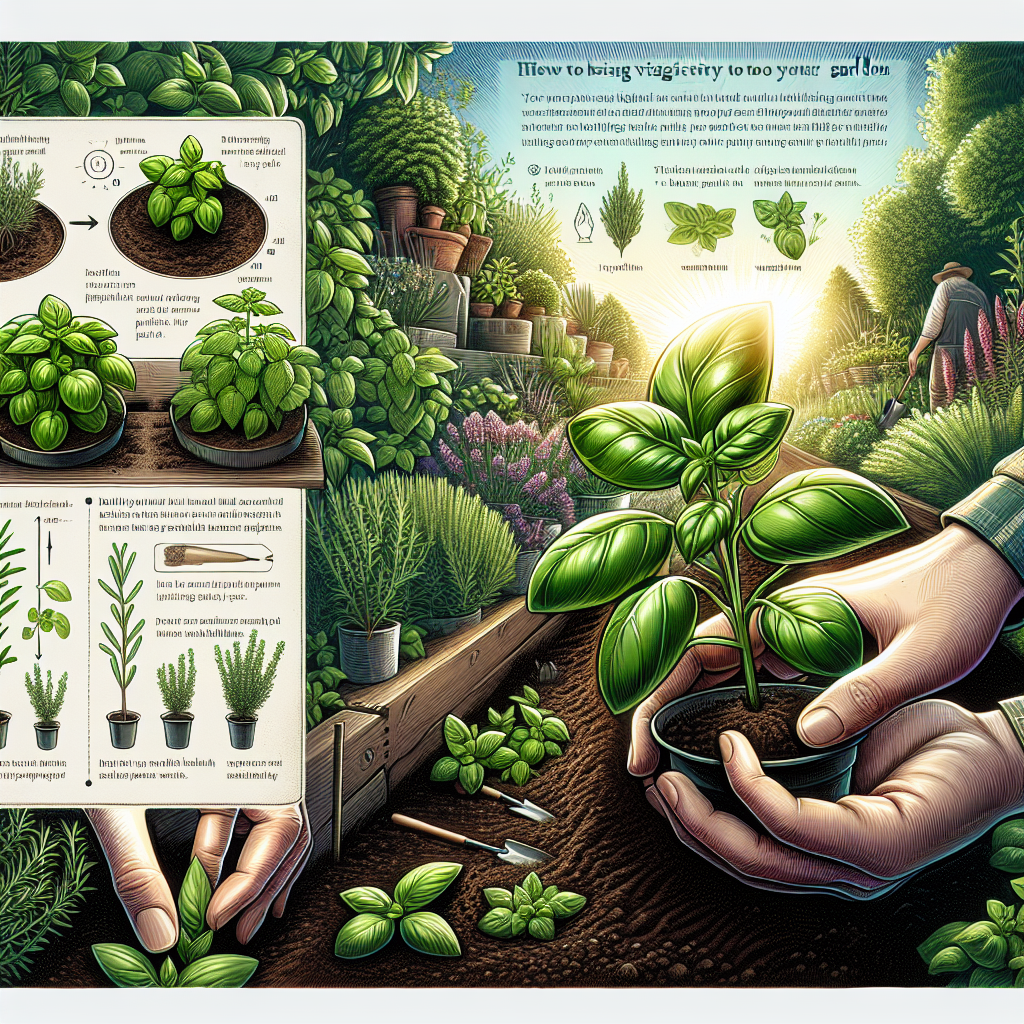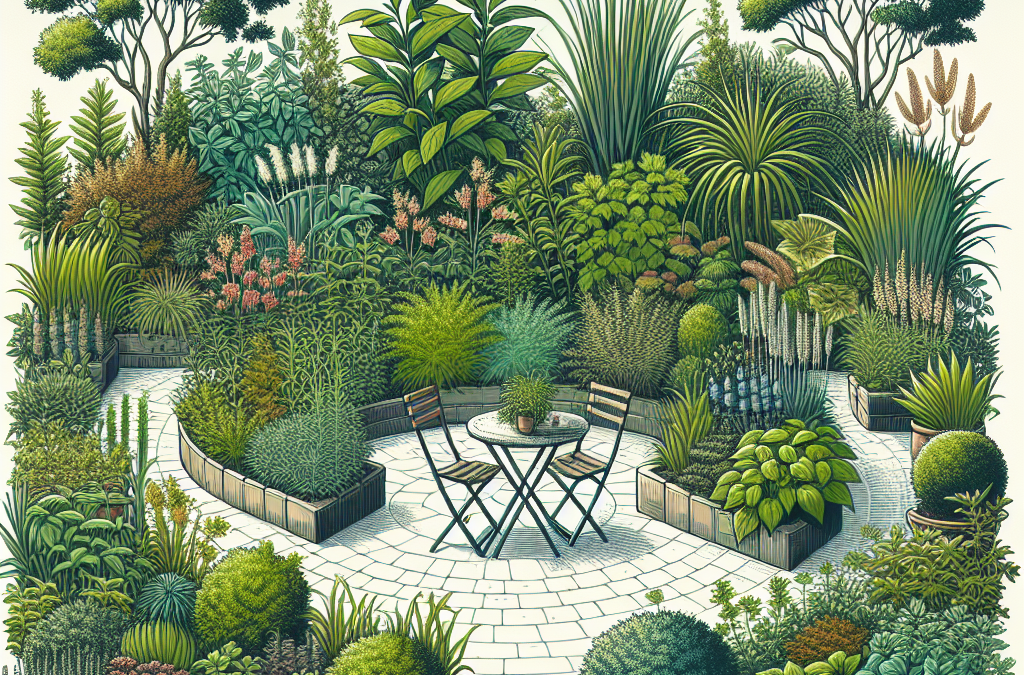Key Takeaways
-
Discover the best herbs to cultivate in your garden for stress relief and how they can soothe your mind.
-
Learn how to design a therapeutic herb garden with a layout that promotes tranquility and peace.
-
Find out how to maintain your herb garden with minimal effort, perfect for those with a busy lifestyle.
-
Explore the benefits of using your home-grown herbs for teas and aromatherapy to enhance relaxation.
-
Understand the basics of creating a Zen garden, including rock arrangement and the use of sand patterns.
Create Your Haven: Therapeutic Herb Gardens for Stress Relief

Let’s face it, life can be overwhelming at times. But imagine stepping into your own backyard and being greeted by a serene landscape of lush herbs, each with the power to melt away your stress. This isn’t just a dream; it’s a therapeutic herb garden, and it’s within your reach. Let’s dive into the world of calming herbs and discover how to create a space that not only looks beautiful but also serves as a natural stress reliever.
Sowing Serenity: Selecting Calming Herbs
When it comes to creating a haven of tranquility, the herbs you choose are the foundation. For stress relief, there are a handful of go-to herbs that are not only easy to grow but also have proven calming properties. Here are some top picks:
-
Lavender: With its soothing scent, lavender is a powerhouse for relaxation. It’s perfect for a beginner and thrives in full sun with well-drained soil.
-
Chamomile: Known for its use in calming teas, chamomile can be a delightful addition to your garden. It prefers full sun and well-drained soil, and it’s incredibly easy to grow.
-
Lemon Balm: This herb emits a gentle lemon fragrance that can help to reduce anxiety. It grows best in full sun to part shade and can even tolerate a bit of neglect.
-
Mint: Mint is not only great for your mojitos; its refreshing scent is also known to relieve headaches and improve mental clarity. Keep in mind, it can be invasive, so consider planting it in pots to keep it contained.
Now, let’s talk about how to bring these herbs together in a way that maximizes their stress-relieving potential.
Designing for Peace: Layout Tips for Maximizing Zen
Designing your herb garden is not just about aesthetics; it’s about creating a flow that allows you to move through the space with ease and comfort. Here are a few layout tips:
-
Plant taller herbs like lavender at the back and shorter ones like chamomile at the front to create a tiered effect that’s pleasing to the eye.
-
Consider adding a small bench or a comfortable sitting area where you can relax and enjoy the scents of your garden.
-
Leave enough space between plants for air circulation and easy harvesting. This also creates a more open and less cluttered space, contributing to a feeling of calm.
Remember, your herb garden should be a reflection of what brings you peace. So, feel free to get creative with the layout!
Simplicity and Care: Easy-to-Maintain Herbs for Busy Lives
Most importantly, your garden should not become another source of stress in your life. That’s why it’s crucial to choose herbs that are low-maintenance. Lavender, chamomile, lemon balm, and mint are not only great for stress relief but also incredibly forgiving and easy to care for. They don’t require daily attention, so even if you’re juggling a hectic schedule, you can still enjoy the benefits of your therapeutic garden.
From Garden to Table: Using Your Herbs for Stress-Relieving Teas and Aromatherapy
One of the joys of growing your own herbs is the ability to use them in your daily life. Imagine sipping on a cup of chamomile tea made from flowers you’ve grown yourself or drifting off to sleep with a sachet of home-grown lavender under your pillow. Here’s how you can bring the calming essence of your garden into your home:
-
Harvest your herbs in the morning when their oils are most concentrated.
-
Dry them by hanging in a cool, dark place or using a dehydrator.
-
Store dried herbs in airtight containers and use them to create soothing teas or as part of your aromatherapy routine.
These simple steps will ensure that you can enjoy the stress-relieving benefits of your herbs year-round.
Crafting a Zen Space: Incorporating Traditional Zen Garden Elements

When we speak of a Zen garden, we’re envisioning a space that embodies harmony, simplicity, and the natural flow of energy. To achieve this, incorporating traditional Zen elements is key. These elements serve not just as decorations, but as tools to help focus the mind and promote a meditative state.
The Art of Rock Arrangement: Stones That Soothe

Stones are the bones of a Zen garden. They represent stability and endurance through the seasons. When arranging stones, it’s important to consider their placement carefully. Odd numbers are preferred, and each stone’s shape and size should balance the others. Position the stones in a way that looks natural, as if they were placed there by time itself.
Creating Harmony with Sand: Tips for Sand Patterns and Care
Besides that, sand in a Zen garden symbolizes water. It’s raked into patterns that mimic the ripples on water, promoting a soothing effect. To maintain these patterns:
-
Rake the sand regularly to preserve its cleanliness and the clarity of the patterns.
-
Change up the patterns from time to time to represent the ever-changing nature of life.
-
Keep the sand free from leaves and debris to maintain a neat appearance.
These simple acts of care can become meditative rituals that not only keep your garden looking beautiful but also help center your mind.
Adding Water Features for Natural Sound Therapy
The sound of water is universally calming. A small fountain or a gently babbling brook can add an auditory layer of tranquility to your Zen garden. The water feature doesn’t have to be large; even a small, solar-powered fountain can provide the soothing sounds that help to wash away stress.
Breathing Life into Your Garden: Planting Techniques for Healthy Herbs

Proper Soil Prep: The Foundation for Thriving Herbs
Good soil is the bedrock of any healthy garden. For herbs, well-draining soil rich in organic matter is ideal. To prepare your soil:
-
Start by removing any weeds or debris.
-
Mix in compost or aged manure to add nutrients.
-
Ensure the soil is loose and aerated to allow for proper root growth.
This groundwork will set the stage for robust herb plants that can better withstand the rigors of growth and weather.
Spacing and Depth: Key Considerations for Planting
Herbs need their space to flourish. Plant them too close, and they’ll compete for light, water, and nutrients. Too far apart, and you won’t make the most of your garden space. A general rule of thumb is to space herbs according to their mature size. Plant seeds or seedlings at a depth that’s twice the size of the seed. For transplants, set them at the same depth they were in their pots.
Nurturing Mind and Body: The Health Benefits of Gardening and Herbs

Gardening is not just about beautifying your space or harvesting fresh produce—it’s also about nurturing your well-being. The act of gardening itself is a stress reliever, known to reduce cortisol levels, which is the body’s stress hormone. Besides that, the herbs you grow can have a myriad of health benefits.
For example, lavender is not only pleasing to the eye and the nose but also has properties that can alleviate insomnia and anxiety. Chamomile, on the other hand, is known for its calming effects and can aid in digestion and help reduce muscle spasms.
“Gardening is the art that uses flowers and plants as paint, and the soil and sky as canvas.” – Elizabeth Murray
Therefore, by engaging in the art of gardening, you’re painting a canvas that improves both your physical and mental health.
Green Therapy: How Gardening Reduces Cortisol Levels
It’s fascinating how digging in the dirt can actually make us feel happier. Clinical research has shown that the act of gardening can lower cortisol levels. This, in turn, can help us feel more relaxed and grounded. As you plant and nurture your herbs, you’re not just cultivating plants; you’re cultivating peace of mind.
Natural Remedies: The Healing Properties of Common Garden Herbs
Many of the herbs we grow have been used for centuries in natural remedies. Here are a few examples:
-
Lavender: Used in essential oils for its relaxing effects and ability to improve sleep quality.
-
Mint: Known to aid in digestion and can help relieve nausea and headaches.
-
Lemon Balm: A calming herb that can reduce stress and help with sleep disorders.
These herbs not only contribute to the beauty of your garden but also to your health and well-being.
Garden Maintenance: Keeping Your Sanctuary Thriving

Just like any space of retreat, your garden requires regular maintenance to keep it as a sanctuary. But don’t worry; with a few simple strategies, you can minimize the effort and maximize the joy your garden brings.
“The greatest fine art of the future will be the making of a comfortable living from a small piece of land.” – Abraham Lincoln
And with a little bit of planning, your small piece of land can become a source of comfort and serenity.
Regular weeding will keep your herbs healthy and prevent competition for nutrients. Mulching helps retain moisture and keeps the soil temperature stable. And remember, the best time to water your herbs is in the early morning or late afternoon to avoid evaporation and give the plants time to soak up the moisture.
By following these simple maintenance steps, your therapeutic herb garden will continue to be a source of peace and relaxation for years to come.
Gardening is a labor of love, and when it comes to maintaining your therapeutic herb garden, the love you give is the peace you receive. A well-maintained garden can provide a sanctuary for wildlife, a feast for the senses, and a natural way to manage everyday stress. Let’s explore some maintenance tips to keep your garden thriving and your mind at ease.
Herbs are generally hardy plants, but they do have enemies in the form of pests. Aphids, slugs, and caterpillars don’t just damage your plants; they can also add to your garden chores. To keep these critters at bay, opt for organic pest control methods. Introducing beneficial insects like ladybugs or using neem oil can protect your plants without the need for harsh chemicals.
Organic Pest Control: Keeping Your Herbs Safe from Pests
Organic pest control is not only better for the environment; it’s also better for you and your herbs. Here are some effective strategies:
-
Encourage natural predators: Ladybugs, praying mantises, and birds all feed on common garden pests.
-
Use organic sprays: Neem oil and insecticidal soaps can deter pests without harming beneficial insects or the plants themselves.
-
Physical barriers: Floating row covers can protect young seedlings from being devoured.
By adopting these organic methods, you’ll keep your herbs healthy and ensure that your garden remains a tranquil retreat.
FAQs: Understanding Therapeutic Herb Gardens
As you embark on this journey to create a space of tranquility and healing, you may have questions. Let’s address some common queries about therapeutic herb gardens and Zen gardening practices.
What are the easiest herbs to grow for stress relief?
Some of the easiest herbs to grow for stress relief include:
-
Lavender: Renowned for its calming scent and resilience.
-
Chamomile: Easy to grow and perfect for a soothing tea.
-
Lemon Balm: Tolerant of various conditions and great for reducing stress.
-
Mint: Hardy and versatile, but remember to contain its growth.
These herbs are not only effective at promoting relaxation but also forgiving for novice gardeners.
How does a Zen garden differ from a traditional garden?
A Zen garden, also known as a Japanese rock garden, is designed to be a meditative space. It typically features elements like rocks, sand, and minimal vegetation, contrasting with the lush greenery of a traditional garden. The focus is on simplicity and creating a sense of peace and harmony.
Can herb gardens really impact mental health?
Absolutely. The act of gardening can reduce stress and promote a sense of well-being. The herbs themselves, such as lavender and chamomile, have properties that can calm the mind and improve mood. It’s a holistic approach to mental health that engages the body and senses.
What are some techniques to enhance the therapeutic effects of my garden?
To enhance the therapeutic effects of your garden:
-
Create a dedicated space for relaxation, such as a bench or hammock.
-
Include a water feature for its soothing sounds.
-
Use wind chimes or garden ornaments that create gentle, calming noises.
-
Plant a variety of textures and colors to engage the senses.
These elements can amplify the stress-relieving benefits of your garden.
How can I incorporate Zen elements into a small space or urban garden?
Incorporating Zen elements into a small space is all about intentionality. Here’s how:
-
Choose a corner or section of your balcony or patio for a mini Zen garden.
-
Use small rocks and sand in a shallow tray to create a tabletop Zen garden.
-
Plant herbs in containers and arrange them to create a sense of calm and order.
-
Include a small water feature or wind chimes to engage the senses.
Even in a limited space, you can create a pocket of serenity.
“The glory of gardening: hands in the dirt, head in the sun, heart with nature. To nurture a garden is to feed not just the body, but the soul.” – Alfred Austin

